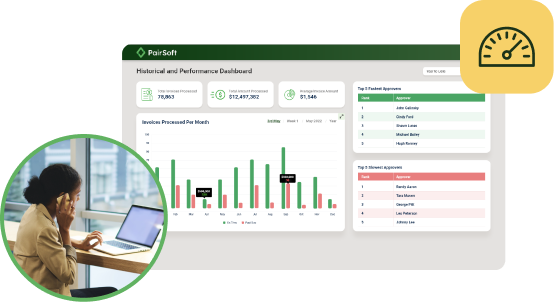
Wadih Pazos
Wadih founded both PairSoft and PaperSave. He is an avid technologist who specializes in streamlining operations and maximizing productivity.
View all posts by Wadih PazosWadih Pazos

This concept may be a little foreign to most people. Many workers are constantly surrounded by paper—memos on their computers or cubicle walls, files amassing in mounds on their desks, the nearest printer almost constantly whirring and shooting out documents. It never seems to end.
However, we live in a world where a paperless office is a reality and wouldn’t require too much time, effort or money to establish. In this modern, sleek work place, employees could still get their tasks done in much the same way, just with a digital edge. Administrators simply need to leverage document management software to make this a reality.
This might require some imagination if workers are too accustomed to offices full of paper and can’t seem to picture themselves working almost solely on their computers. The debate rages on regarding whether or not a completely digitized office is even a possibility.
The easy answer is that an entirely paperless office is possible. This might not be practical for every company out there, but the majority would likely see cost, efficiency, time and other savings by going digital. This is obvious because a number of businesses have done so already with great results.
In fact, The Motley Fool reported that this seems to be a nationwide trend, as many printer manufacturers have seen steadily tumbling revenues over the past few years.
“There is growing evidence that a transition has finally begun to take place. Companies dependent on printing have posted disappointing results, and further downsize seems likely,” the news source stated.
It is possible for company leaders to take advantage of electronic workflow strategies and not completely eschew the old, tried and true ways. This might be advantageous to ease workers into the idea of not using paper for things like note-taking, writing memos, drafting invoices, and other tasks that were once done manually.
It’s up to administrators to decide at what pace they want to go paperless. For instance, employees could start the digitization process but still retain the tangible documents for a while so that the records could still be accessed quickly when staffers are just learning how to use the electronic system.
There is no right or wrong way to do this – it depends on how long it takes workers to become well-versed in the modern comforts of paperless technology.


Many organizations start with manual receipt handling, fragmented card feeds and slow AP processes. Implement AI agents to auto-capture receipts, route approvals, enable punch-out buys and post to the ERP.
Result: faster batching, fewer errors and cost savings. “This saves us hours every month.”
Many organizations face slow, paper-heavy AP and fragmented procurement that waste time and inflate costs. AI Agents can automate approvals, PO matching and record sync to improve speed, accuracy and control. Client quote: “It freed up hours and made our process reliable.”
Operational drag and rising costs slow growth: teams waste time on manual tasks, misaligned priorities and opaque processes. AI Agents help automate routine work and coordinate actions across teams. “We’ve lost time to repeats and handoffs,” says a typical client.
Companies struggle with manual procurement, fragmented approvals, and costly integrations that slow growth and obscure spend. Our AI Agents streamline requisitions, POs, and invoice matching to cut manual work and improve visibility. “We were wasting time and missing insights,” says a client.

Many teams start with fragmented PO/AP systems, manual matching and delayed financial reporting. Deploying AI agents to automate PO checks, real-time encumbrance tracking and invoice matching reduces processing time and errors, delivering live budgets and faster closes. “Finally, we can see current balances and approve instantly.”
Many companies juggle growing invoice volumes and legacy systems. They struggle with manual processes, compliance gaps and limited headcount. Our AI Agents automate integrations, enforce rules and surface exceptions. The typical outcome: faster closes and measurable ROI. “We stopped chasing invoices.”